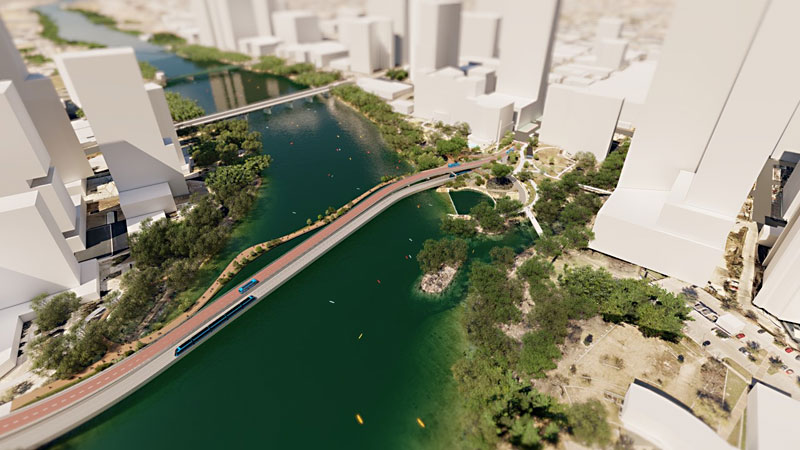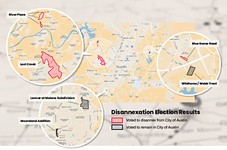Council Moves to Ensure People Actually Live Near Project Connect Stations
What’s the point of public transit if nobody can use it?
By Austin Sanders, 11:45AM, Fri. Mar. 10, 2023

When Project Connect’s new light rail lines and expanded bus routes begin moving people throughout Austin, their collective success will largely depend on the number of people who live near those lines and routes. More people living around transit means easier access to transit which, in theory, means greater ridership.
City Council hopes to encourage that potential future with a new Equitable Transit Oriented Development (ETOD) policy plan, which they adopted unanimously yesterday, with Council Member Mackenzie Kelly abstaining. The plan, under development for the past two years, suggests a range of policy tools the city could implement to make Project Connect accessible to as many people with as many life experiences as possible.
Council Member Natasha Harper-Madison, who authored the Council resolution in June 2021 that kicked off the city’s ETOD planning process, encouraged staff and her colleagues to live up to the promise offered within the draft plan. “I want to make sure that all types of people can live in all parts of our fair Capital city,” Harper-Madison said. “It’s absolutely imperative that we make sure as many of our residents as possible have access to this historic investment in our transit system … Let’s not just let this policy plan become another binder on a shelf somewhere.”
Over the past three years, Capital Metro has been awarded four different grants from the Federal Transit Authority to carry out ETOD planning. They will also be the agency in charge of operating Austin’s expanded transit system, so they are leading the ETOD effort in collaboration with city staff and the Austin Transit Partnership. The next step is for the three agencies to begin planning around the North Lamar Transit Center and the South Congress Transit Center; Cap Metro owns the land at these two station areas, so their planners will be able to work with the city to move more quickly on implementing some of the policies presented in the ETOD plan.
City staff, in collaboration with Austin Transit Partnership and Capital Metro staff, will now flesh out those tools and bring them back to Council for approval and/or funding. Council and transit advocates have been mostly focused on the land-use piece, because upzoning the land around Project Connect’s station areas allows more people to live near those station areas. If that happens, it will be through amendments to the Land Development Code, which could allow greater housing density near transit stations by-right (i.e. you could build more units without a lengthy review process) or through a new ETOD zoning overlay, which would allow developers to build taller buildings with less parking in exchange for community benefits like affordable housing.
CM Chito Vela offered an amendment to a resolution accompanying the ETOD plan that provides “sharper direction” to staff so that they can produce more detailed policies as they are brought back to Council. Specifically, Vela’s amendment asks for: a priority list for the nearly 50 tools staff proposed in the ETOD plan; an implementation timeline for each tool; goals for population density around specific light rail station areas and along the lines as a whole (both are factors the Federal Transportation Authority considers when awarding grants to local transit projects); and exploration of “value capture tools” like Tax Increment Financing zones, which could be deployed to help pay for things like affordable housing, bike and pedestrian improvements, and other infrastructure that would support Project Connect.
Staff hopes to bring Council potential LDC amendments and a draft ETOD zoning overlay late 2023 or early 2024.
* Editor's note Tuesday, March 14, 2:10pm: This story has been updated to include information on Cap Metro’s ETOD-related federal funding.
Got something to say on the subject? Send a letter to the editor.
A note to readers: Bold and uncensored, The Austin Chronicle has been Austin’s independent news source for over 40 years, expressing the community’s political and environmental concerns and supporting its active cultural scene. Now more than ever, we need your support to continue supplying Austin with independent, free press. If real news is important to you, please consider making a donation of $5, $10 or whatever you can afford, to help keep our journalism on stands.
May 10, 2024
May 10, 2024
Project Connect, Council recap, Natasha Harper-Madison, Mackenzie Kelly, ETOD








